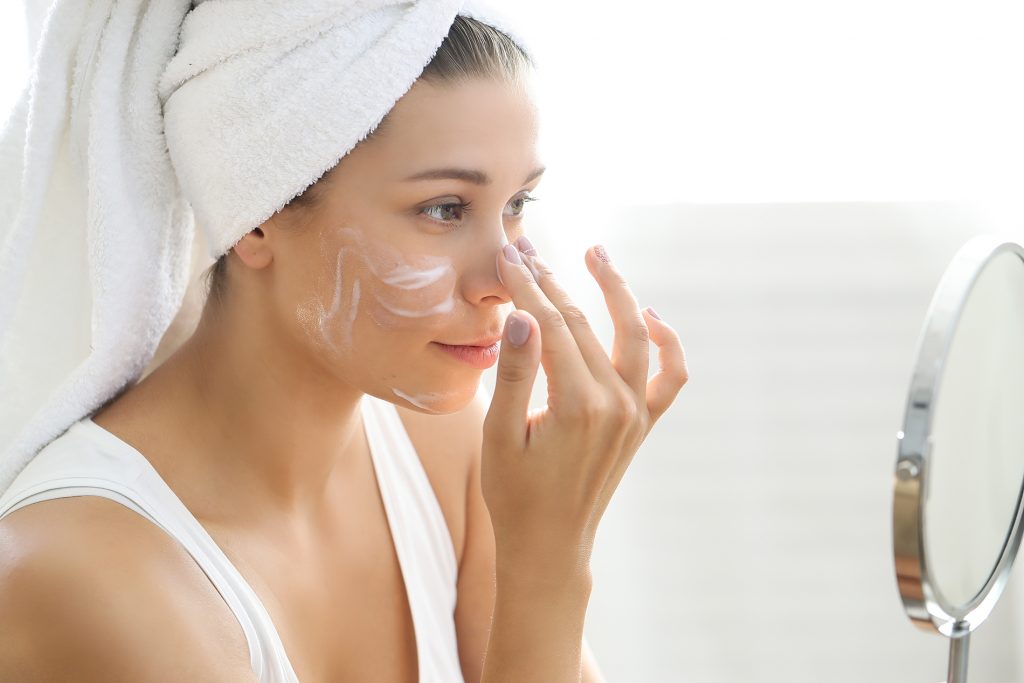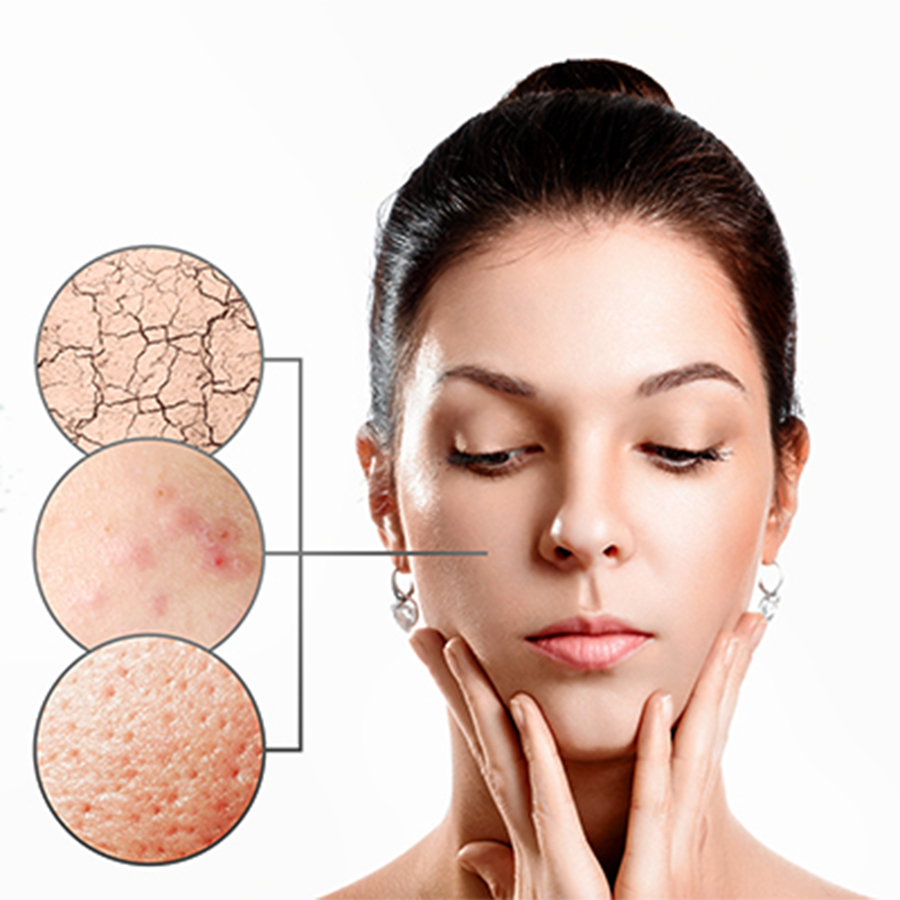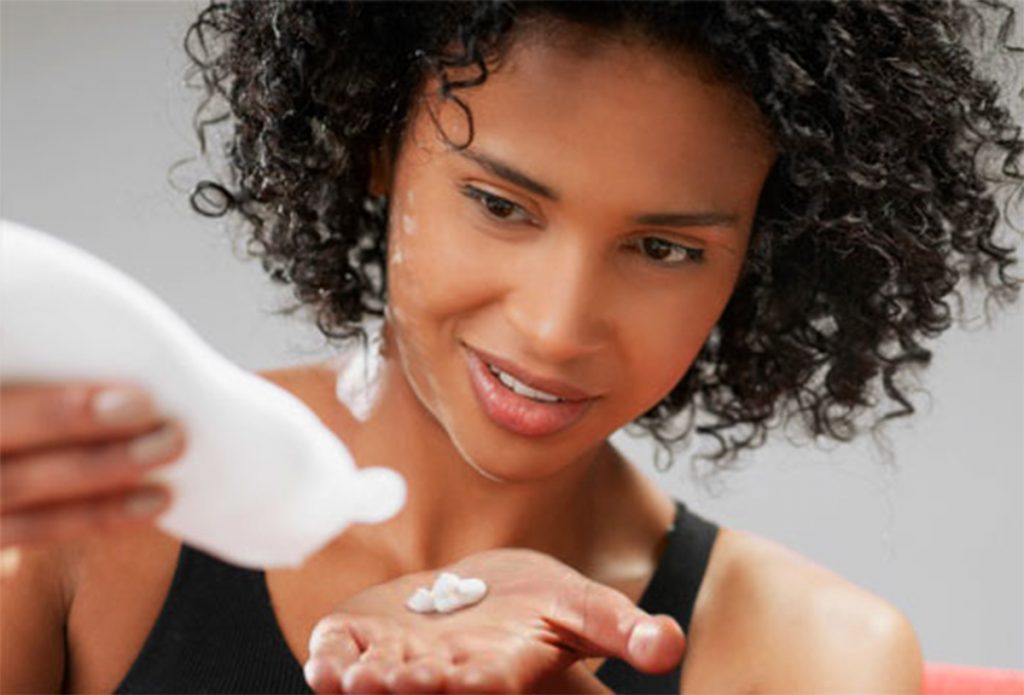
- Skin resection and the relationship with facial skin types
- Understanding the causes
- Factors that can lead to dry skin on the face
- What are the solutions for a dry facial skin?
- Related products
The skin of the face is one of the most important parts of our body. However, when it dries out, it can become stiff and stretched out, even reddish, scaly and itchy. There are several causes that lead to dry facial skin and understanding them will help to find relevant solutions.
SIGNS & SYMPTOMS
Skin resection and the relationship with facial skin types
Dry skin on the face is a common problem, although some people are more prone to it than others. The main types of facial skin are normal, dry, oily or mixed skin. As people age, they also need to consider how skin aging affects the skin.
- The normal facial skin type is the skin that is neither prone to dryness, nor to oiliness. Many factors can make a normal facial skin dry.
- The dry facial skin type is the skin of the face that tends to present alterations related to the symptoms of dryness, as previously exposed. It usually presents a stretchy feeling and is slightly stiff in some areas.
- The oily facial skin type is less likely to become dry, except in the case of excessive washes, or by adopting an inadequate skin care routine.
- The mixed facial skin type tends to develop a dryness in certain areas of the face, especially the cheeks, while the T-zone is more oily.
Signs & symptoms of dry and very dry skin
Dry skin
When the skin of the face begins to lose moisture, the dryness can only be perceived by the skin:
- Stretching
- Asperity
Very dry skin
If this initial hangover is not treated, you can go ahead and stay:
- Very tense
- Scamoso
- Cracked
- Itchy
At this stage it is possible that fine lines can be developed provoked by dryness, contributing to early skin aging and wrinkle formation.

Sensitive dry skin
When the face dries out, it usually becomes sensitive. However, facial sensitivity is not always related to dryness. It is important to avoid always the use of skin care products that contain irritating ingredients, such as perfumes and dyes. Always check if the product was dermatologically tested on sensitive skin.
Dry facial skin and diseases
- The medical term for dry skin is xerose. It comes from the Greek “Xero”, which means “dry”; and “osis” which means “disease”.
- Inflammatory skin problems such as atopic dermatitis and psoriasis are also linked to facial dryness.
- Metabolic conditions such as diabetes mellitus and kidney diseases can also increase the risk of developing dry skin.
Some acne medications, whether topical or oral, can make oily skin prone to acne very dry. But if you are worried or unsure about your symptoms, or if they are getting worse, we recommend consulting your doctor or dermatologist personally.
CAUSES & TRIGGERING FACTORS
Understanding the causes of dry skin on the face
There are several internal and external factors that can dry out the skin of the face, all of which contribute to the dehydration process. The level of severity of dry skin will depend on the number and intensity of these factors.
External Causes
All external causes, which lead to a dry facial skin, make the natural lipidic barrier of the surface deteriorate. When this barrier breaks, the humidity can evaporate and the vital substances of humidity fixation are easily eliminated. As these natural hydration factors are missing, the skin can’t hold much water and becomes dry, until they are replaced and the surface lipidic barrier is repaired.
If the dry skin is not treated with moisturizers containing moisture factors, dryness can progress deeper into the skin of the face, interrupting the moisture networks in the deeper layers of the skin.
The natural upward flow of moisture to the upper layers is reduced, leading to very dry skin.
External triggers
The main external causes are environmental triggers and inadequate facial skin care routines. The face is usually exposed to these external causes much more frequently than the rest of the body:
Environmental
- Severe weather conditions – hot, cold and dry air.
- Changes of season – dry skin symptoms are most common during the winter and summer months.
- Ultraviolet (UV) sunlight can increase the rate of skin aging and it is more susceptible to dryness caused by age.
Inappropriate skin care
- Frequent washing, or long, hot baths and showers remove the lipids that make up the skin barrier.
- An inappropriate skin care routine – It is important to follow a routine and use products that are suitable for dry skin. It is of special importance not to use aggressive soaps that remove the natural lipids from the skin.
Medication
Some drugs with side effects, alter the balance of water inside the skin. It is known that drugs that control blood pressure and diuretic drugs have such an effect. If in doubt, always seek your dermatologist for a correct diagnosis.
Internal factors
Genetic influences
All people have a unique set of genes that determine the characteristics of the skin, such as pigmentation levels, humidity and lipids. This means that, under identical conditions, different people have different levels of moisture and lipids in the skin. Individuals with light skin are more likely to have dry skin than people with darker complexion. In addition, diseases such as atopic dermatitis, psoriasis, diabetes and ichthyosis generally, but not always, have a genetic relationship.
Hormonal influences
When the level of these hormones changes, for example, during adolescence and menopause, the moisture balance of the skin can be affected. During menopause, the amount of estrogen in the body decreases, leading to dry skin. It can also occur during pregnancy.
Age
As people age, the capacity of the skin to produce sweat and lipids decreases due to the reduction of the activity of the sebaceous glands and sweat. The advance of age leaves the skin more susceptible to dryness and the drier, the more prone it will be to the formation of fine lines and wrinkles, provoked by dryness.
Early skin aging
The aging of the skin comes naturally with age. However, extensive and unprotected exposure to ultraviolet (UV) rays can increase the rate of skin aging, generating fine lines and early wrinkles.
Diet
The skin needs a number of nutrients, such as unsaturated fatty acids and vitamins, to function properly. The lack of any of these can lead to dry skin.

CONTRIBUTING FACTORS
Factors that can lead to dry skin on the face
Besides the main causes of dry skin on the face, several other factors also affect the severity of this dryness. Knowing them will help to avoid them and thus reduce their impact.
Lack of effective treatment
If the dry skin of the face is not treated properly, or ineffective moisturizers are used, this condition tends to get worse rather than better. This happens because dryness continues to affect the moisture networks in the deeper layers of the skin, which moisturize the upper layers.
Sun exposure
Excessive exposure to the sun can also lead to dry skin on the face. Therefore, it is important to choose a sunscreen formulated for dry skin, which contains moisturizing actives, besides an appropriate Sun Protection Factor (SPF). It is also very important that the sunscreen, and any other skin care products used on dry skin, do not contain perfumes and irritating dyes, because the skin, especially the face, is more prone to irritation than normal skin.
Occupational risk
In some activities it is necessary to be under conditions that lead the skin of the face to dry out. For example, outdoor sports, gardening and vacations in cold places will increase the risk of developing dry skin on the face.
Dehydration
The amount of moisture in the skin is related to the amount of water the body can provide. Consequently, when it is dehydrated, it cannot provide the proper amounts of water to the skin.
The people most prone to dehydration are the oldest, as the sensation of thirst decreases with age, and also individuals who perform manual work or intense physical exercise.
Smoking
Toxins in cigarette smoke, including nicotine, can reduce blood flow. This leads to a decrease in the rate of metabolism within the skin. The skin can dry out and age prematurely.

SOLUTIONS
What are the solutions for a dry facial skin?
Avoiding contributing factors
Besides adopting a good cleaning and hydration routine, it is important to avoid factors that favor skin dryness. This will help to soften its impacts and the need for treatment:
– Avoid dry air by spending less time outdoors during a hot or cold climate and use a humidifier indoors when the heating is on.
– Reduce the time spent under hot water by taking quick showers instead of longer baths.
– Use skin care products without perfumes, dyes or parabens to avoid irritation.
Dry and very dry face skin needs a comprehensive skin care routine, including the proper use of cleansing solutions, moisturizers and sunscreens. Water-based cleansing solutions, with the addition of moisturizing factors, are suitable for dry to very dry face skin, while oil-based solutions are ideal for very dry and extremely dry skin care, in addition to atopic dermatitis.
Skin cleansing for dry or very dry face
A gentle but effective cleaning solution is an essential prerequisite for the skin care of normal or dry skin, as well as for those prone to acne and atopic dermatitis. It is always valid to remember the importance of a daily routine for cleansing face care, well aligned with a hydration. A face skin properly clean, with a superficial barrier working well, will absorb and retain the humidity in an efficient way.
Hydrating the dry skin of the face
The secret to hydrate dry or very dry skin of the face is to replenish the natural hydration factors, which attract moisture and retain it in the stratum corneum, or in the upper layer of the skin. This prevents it from drying out and reduces roughness, relieving stretching. Eucerin face smoothing creams contain natural hydration factors, such as urea and lactate, which regulate the amount of humidity, fixing the water on the skin upper layers.
Both urea and lactate are well tolerated by the skin. They are natural, non-toxic compounds.
Treating the dry skin of the face
To take care of the skin that is aging it is necessary to treat the most common causes that lead to skin aging. As it ages, skin dryness and UV damage contribute to the development of fine lines and wrinkles, loss of volume, density and brightness. Thus, it is even more important to follow a skin care routine, especially moisturizing and protecting it against UVA and UVB rays. Moreover, its aging usually requires a deep hydration to reduce the appearance and prevent the development of new wrinkles.
It has water binding capabilities, improving skin regeneration and favoring nutrient distribution. As the skin of the face ages, the Hyaluron-free amount decreases in the epidermis and especially in the lower layers of the dermis. Hyaluronic acid, applied topically, can slow down and reverse the formation of wrinkles. Moreover, this can be further optimized with an adequate hydration and skin care routine.
Tags: #dryskin #dryskintreatment #dryskincare #dryskincareroutine #dryskintips #howtogetridofdryskin #getridofdryskin #dryskinremedy #dryskinroutine #howtotreatdryskin #moisturizerfordryskin #dryskinface #dryskincream #tipsfordryskin #howtofixdryskin #dryskinfacemask #dryskinremedies #dryskinfacewash #howtocuredryskin #dryskinmoisturizer #dryskinduringwinter #homeremedyfordryskin #homeremediesfordryskin #skincaretipsfordryskin



